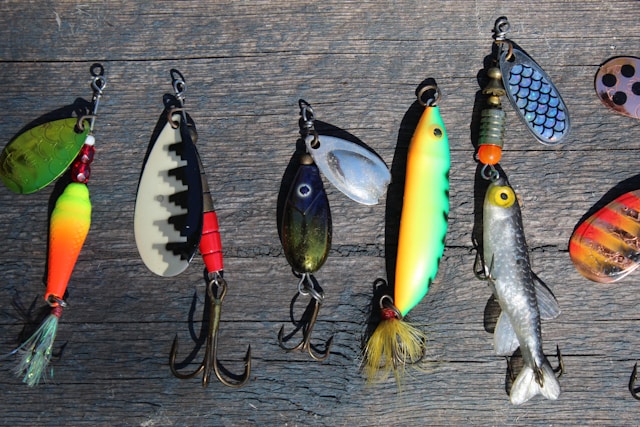Fishing for catfish in your local pond can be a serene and rewarding experience, but success doesn’t come without a little know-how. Part of this knowledge is understanding what the catfish are biting in your specific body of water. Here, we’ll cover an in-depth guide to the best baits specifically tailored for catching catfish in ponds. Whether you’re a seasoned angler looking to mix up your approach or a beginner eager to land your first whiskered prize, read on to up your game and make the most out of your next fishing expedition.
Understanding Catfish Behavior
Before you can bait your hook, it’s essential to understand the nature of your elusive catch. Catfish are notorious scavengers and are known to feed on a wide variety of items. In ponds, they can find an array of natural food sources, from insects and worms to small fish and algae. Their foraging habits often make them less picky eaters compared to other game fish. This knowledge is key in selecting the best bait that will most effectively attract catfish in your pond.
The Live Bait Approach
Live bait often mimics natural food sources, making it a successful choice for catfish.
Worms:
Earthworms are a classic catfish bait for good reason. They’re easily accessible and resemble a common catfish meal found in ponds. Red wigglers and nightcrawlers are particularly effective due to their size and movement. Hook a wiggler once towards the end, allowing it to move freely. Cast near potential feeding areas and allow it to rest on the bottom, reeling in slack occasionally to produce movement.
Insects:
Insects like grasshoppers and crickets can work wonders, especially when they’re abundant in the area. Hook them once through the thorax or behind the head to keep them secure, and then cast near the shoreline. Natural or artificial light sources near ponds can attract insects at night, thus catfish, too.
Small Fish:
Though not as ethical, using small live fish as bait can yield impressive results. Minnows and sunfish are common choices if the pond’s regulations allow it, and they should be hooked through the lip or dorsal fin to maintain their viability. This method is particularly effective when fishing for larger catfish.
The Art of Prepared Baits

For those who prefer less mess and a more accessible approach, prepared baits can offer an effective alternative to live bait options.
Dough Baits:
Consistency is key when using dough baits, which require molding around your hook. Many companies produce dough baits in a variety of scents and colors, and some even have the added benefit of being stiffer to stay on the hook better. Cheese and blood flavors tend to be popular among catfish anglers.
Stink Baits:
Stink baits live up to their name and are often catfish favorites. These baits have pungent odors that can attract catfish from a distance. Chicken liver is a common home-made stink bait, or you can purchase commercial versions that are often more potent with ingredients like garlic, anise oil, or other strong scents that catfish can’t resist.
Other Commercial Baits:
The market is rich with specialized catfish baits in various forms, such as chunks, dip baits, and punch baits. These products have been designed and formulated to entice catfish and are usually very convenient to use. Be sure to read the product information carefully and even talk to local anglers or bait shops to find the best brand and type for your pond.
Natural Baits for a Sustainable Approach
Staying in tune with the environment is also part of the angler’s ethos.
Cut Bait:
Cut bait refers to pieces of fish that can easily be obtained from processing your own catches or purchasing them from stores. The natural oils, movement, and scent make cut bait appealing to catfish. Bluegills, shad, or other local fish can all be effective cut bait choices. Simply cut them into appropriate sizes and hook through the skin or flesh to keep them secure on your line.
Invasive Species:
Ponds can become overrun by invasive species. Turning these ecological nuisances into bait not only helps maintain the balance of the local ecosystem but also provides a sustainable option. Check the local regulations to see if you can legally use certain species as bait.
Nightcrawlers and Leeches:
Though alive, nightcrawlers and leeches are often purchased from bait shops, making them a convenient yet natural bait alternative. Their natural movement and scent when hooked correctly can make them irresistible to catfish.
The Grocery Store Bait Run
Sometimes, the best bait for catfish in ponds is available in your local grocery store.
Chicken Liver:
Among the most effective and widely available catfish baits is chicken liver. This economical and practical option can be used as-is or seasoned to your liking. It’s versatile and can often outperform more exotic offerings. Hook larger pieces securely to your line to prevent them from falling off.
Shrimp:
Though catfish in ponds might not naturally encounter shrimp, its strong scent and taste can make it an attractive bait. Peeled or unpeeled, raw shrimp make for a great catfish bait option.
Hot Dogs:
Hot dogs are a surprising but effective bait, largely due to their strong scent and the ease of their use. They can be cut into pieces, skewered onto a hook, or even wrapped in a netting material to keep them secure.
Tips for Baiting Success
Selecting the right bait is just the first step. How you present it can be equally critical to your success.
Keep it Fresh:
Whether it’s live bait or a prepared recipe, ensure your bait is as fresh as possible. This will increase its appeal to the catfish in your pond.
Vary Your Approach:
Ponds can vary greatly in their depth, structure, and the population of fish and other catfish food. Experiment with different baits and fishing techniques to see what works best in your local body of water.
Be Patient:
While catfish are often less selective about their food than other game fish, they can still be temperamental. Be patient and be willing to adjust your strategy as needed.
Maintain Your Gear:
No matter how enticing your bait is, if it’s not presented properly, you won’t catch any fish. Ensure your hooks and lines are in good condition and that your bait is secure.
Five Intriguing Insights About Catfish Bait
- Catfish Have Exceptionally Sensitive Noses: Catfish possess an advanced sense of smell, enabling them to detect bait from significant distances. This keen sense helps explain why stink baits are particularly effective in luring them in.
- Versatility is Key: Catfish aren’t picky eaters. They’re known to eat just about anything, from live baits like worms and small fish to pantry items like chicken liver and hot dogs. This versatility in diet makes them one of the most accessible fish for anglers to target.
- The Role of Whiskers: Contrary to common belief, the whiskers of a catfish, called barbels, aren’t for biting or stinging. Instead, they’re loaded with taste buds that help catfish detect and taste potential food in murky waters where visibility is low.
- Night Time is the Right Time: Catfish are nocturnal feeders. Fishing at night with baits that emit strong odors or create vibrations can significantly increase the likelihood of a successful catch as catfish are more active and hunting for food.
- Homemade vs. Store-Bought: While there’s a vast market for commercial catfish baits, many seasoned anglers swear by homemade concoctions. These can range from unique blends of cheese and garlic to fermented chicken livers. Experimenting with homemade baits can be a fun and rewarding aspect of catfish fishing.
Reflecting on the Whiskered Victory
Catching catfish in a pond requires understanding the ecosystem, patience, and sometimes a little creativity. By employing these strategies and experimenting with a variety of baits, you can significantly increase your chances of bringing in a memorable haul. Remember, the best bait for catfish in your pond is often the one that caters to the local environment and the catfish’s natural feeding habits. Tight lines, and may your next fishing trip be filled with the excitement of the catch!



